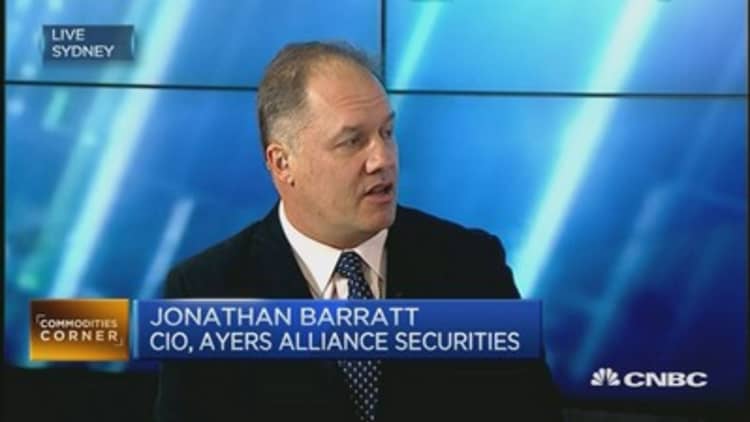
Iron ore's near 10 percent rebound on Thursday following a horror streak this week left strategists debating whether more pain is in store for the beleaguered commodity.
Benchmark ore for delivery to the Chinese port of Tianjin ended a ten-day rout overnight, rising to $48.30 a ton, a 9.5 percent increase from an all-time record low of $44.10 hit in the previous session.
Major banks like Citigroup remain bearish, predicting prices to fall below $40 a ton this year due to the commodity's fundamental oversupply. HSBC meanwhile expects prices to trade around $45 during the third quarter. "We expect the market to go into oversupply and shake out mode again," it said in a report this week.
But some analysts are optimistic.
"A near 10 percent bounce suggests people will think iron ore is now relatively cheap. A market that breaks to new lows and stays low is very weak, but to see such a bounce suggests there's more comfort. So as the dust settles in the equity market, buyers will come back," Jonathan Barratt, chief investment officer at Ayers Alliance Securities, told CNBC on Friday.
Read MoreHow badly did miners suffer last year? $156B bad
Thursday's rally came after the mineral ventured deeper into bear market territory this week, with losses now exceeding 20 percent since mid-June, as recent aggressive selling in Chinese equities exacerbated supply worries. China is the world's biggest consumer of iron ore and traders are afraid that a prolonged crash in mainland stocks could have a spillover effect on China's economy, impacting commodity demand.
But fresh efforts by Beijing to stem the market sell-off on Thursday finally worked, with the benchmark Shanghai index rebounding nearly 6 percent, and that relief filtered down to iron ore.
Bull vs bear
Despite the recent sell-off, iron ore prices are still trading 1.8 times above long run averages, the Minerals Council of Australia said in a policy paper this week, hinting that will be unsustainable going forward.
"Forecasts that prices will be sustained at levels substantially above long-term averages require very strong cases to be accepted. A reliance on an upward shift in demand, albeit a somewhat persistent one, is insufficient. Genuine shortages of minerals, or equivalently a persistent decline in the grade of mineral ores, are needed to make any such case."
Read MoreThis sector is getting slammed by China's market dive
Barratt, however, disagrees, pointing to strong Chinese import data. Shipments from Australia's Port Hedland, the world's largest bulk export port, soared to a record high of 38 million tons in June, according to the Pilbara Ports Authority, with 32.6 million tons going to China.
"When you look at what's happening in Australia, the Chinese are certainly buying record amounts and that's going back into their infrastructure. When you look at infrastructure spending and combine that with their stimulus, you've got a really strong argument to suggest that demand will remain with us for some time to come," he said.
Moreover, he believes iron ore's fortunes lie with Chinese equity markets, not supply fundamentals.
"Given there was so much discussion over the use of iron ore and copper as collateral for loans in China, I think it's a big cause. At the end of the day, all the inputs the People's Bank of China is putting in will support the equity market and it will support the iron ore price."
What does this mean for miners?
But there's no current buying opportunity in Australian mining companies, according to Goldman Sachs.
"Upside catalysts are hard to identify, and while dividend yields offer strong valuation support at current levels we believe the risk/return is still more skewed to the downside," the bank said in a note on Thursday.
A 6 percent dividend is the main argument in support of miners, Goldman explained, but pointed to the sector's high pay-out ratio as a key risk. At 95 percent, the ratio is more than double the historical average and potentially set to go higher, it said.

